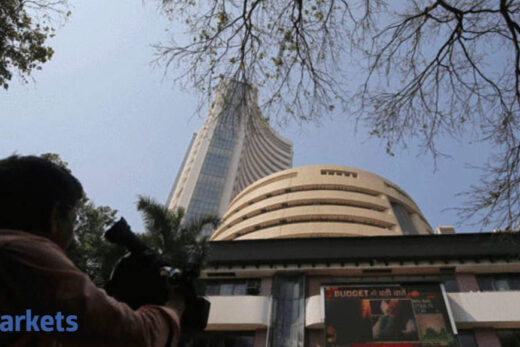If you were to remove and HDFC from the equation, then financials will appear as laggards. Look at the Bank Nifty. Are you seeing balance sheets also improve?
Bank Nifty is up close to 60% on a YoY basis. So, it is not as if they have been laggards in the sense that the recovery has left them untouched. Even HDFC Bank is reporting 15-16% loan book growth which is solid loan book growth given the circumstances. I think the reason the bank recovery in terms of loan offtake will take a little longer is because we have all realised that the impact of Covid on small businesses is more serious than the impact of Covid on a Titan or a Pidilite or Asian Paints or Relaxo.
Furthermore, as the economy gets formalised, the prosperity of Titan or Tanshiq means that smaller jewellers are suffering; the prosperity of a Pidilite means smaller players in that sector are suffering. So, the pain of the SME sector necessarily is gain for a portfolio company but what it also means is SME credit offtake has not yet come back and that is another six months to 12 months out.
Hence bank loan books are probably not growing at the 20-25% that they used to grow in previous economic booms and loan books of banks like HDFC Bank, Kotak Bank is growing at around 15%. My reckoning is it will take them another year to get loan book growth up to a 90% mark but even without that, net profit growth for the high quality banks will come back to 20% from the quarter that has just ended. So, it will take a little bit more time for bank loan book growth to recover for high quality banks. We are pretty confident about credit quality. I do not think that is a big concern anymore. Loan book growth will take a little longer because SMEs have been pulverised by Covid and it takes a little longer for them to recover.
Also Read: Why Saurabh Mukherjea is not going to lose any sleep over TCS falling 6%
Which are the deep value stocks becoming a flavour of the season? A massive trigger came from the government selling off Air India to the Tatas. That may have been one of the most difficult disinvestment candidates. Is there a case now for people to look even more at PSUs?
I agree with you that the Air India sale to the Tata Group is a momentous occasion. It is something to be celebrated. A lot of credit to everybody involved. But I am never quite sure why people get so excited about public sector stocks. The goal of a government owned company is to serve the needs of the nation and we are very grateful that they do serve the needs of the nation ever so well — be it IRCTC, Steel Authority of India or the oil marketing companies or a SBI. But shareholders’ interests are secondary in that context.
Therefore I never quite understood the fascination so many people have been in our country including many other institutional fund managers. I have never understood this value investors fascination with public sector stocks.
A very big change I think is visible in the manufacturing space, it could be China plus one, it could be the fact that there is a PLI scheme or that the supply chains in the world are moving. What is the best way to identify a good manufacturing company?
We travelled around the country over the last two weeks to meet manufacturing companies in various parts of the nation. Whether because of China plus one or PLI — the demand drivers are not fully obvious — but it is very clear that there is a robust pullback in manufacturing. Where we are being a little bit cautious is like everybody else, we are hearing about widespread reports of cost inflation. Labour costs are rising at 20-25% for manufacturers. The news about semiconductor shortage, coal shortage, gas shortage in the western world are obviously commonplace reports and hence we are trying to be very careful about focusing on manufacturers where we do see pricing power.
So just to give you an extreme example, a company like
because of their utter dominance of aliphatic amines, the essential input for the pharma industry for API manufacturing, is the dominant aliphatic amines manufacturer. We have a degree of comfort that they can deal with the raw material cost inflation that might come through.
Similarly, in
’s case, we can see the pricing power. They have a huge dominance in the high end of the glass line reactors market, they have bulging order books and therefore we are looking for manufacturing companies where the pricing power is proven, where the competitive advantages are so strong that other rivals cannot get in the way of our investee company hiking prices.
So, look for manufacturers, but look for franchises where they will be able to hike prices by perhaps as much as 10 to 20% this year to offset input cost inflation which does seem to be coming through as strong as the demand recovery has come for Indian manufacturers.
How seriously should we look at this entire spurt in energy whether it is coal, oil or solar? Could this really shake the applecart?
If we look back at India’s economic booms, typically we are able to do at least two years of strong growth. In exceptional circumstances like 2004 to 2008, we were able to do four years of strong growth. Either at the two year or at the four year mark, input cost inflation goes out of control and forces the rate cycle to turn up strong and that dampens economic growth. I do not think we are at a juncture where we have to worry about that inordinately.
Obviously, there will be tightening from both the RBI and the Fed. At this juncture, it looks obvious that the RBI and the Fed will tighten next year but that is very similar to what happened in 2004. In 2004, the Fed started tightening but because there was tightening at a time when growth was picking up and the outlook was buoyant, the market continued rallying for another three, three and a half years before the traumatic events of 2008.
But the rate hikes next year seem to be on the cards. It looks to me to be similar to the 2004 hikes and I would not therefore worry about the macro cycle for another couple of years at least. How do we make money through this demand recovery with energy prices rising? I will go back to the point, play on franchises with enormous pricing power — master franchises or market leading franchises.
I do not have a view on energy prices, the whole commodity price thing is not something we specialise in. We are trying to hedge ourselves against roaring commodity prices by looking for champion franchises with pricing power.


